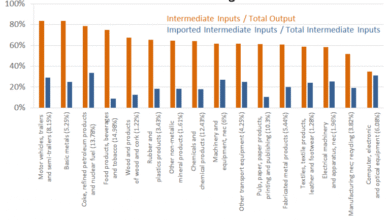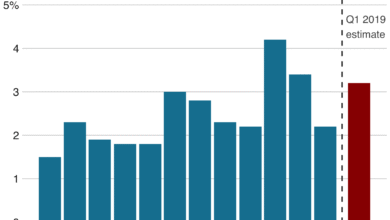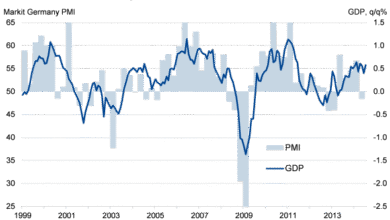Private Sector Hiring Shows Strong Growth in July

Private sector hiring has shown a notable rebound, indicating a significant shift in the labor market recovery, as highlighted by the recent ADP payroll report. In July, payrolls surged by a seasonally adjusted 104,000 positions, a positive reversal from the previous month’s decline. This growth surpasses economists’ forecasts, showcasing steady job growth even as overall wage growth remains a focal point in U.S. employment trends. While hiring levels have declined compared to the previous year, this uptick reflects a still-resilient economy amid concerns about external factors like tariffs impacting future growth. As the private sector adapts to these challenges, the latest figures shed light on the evolving landscape of American jobs.
The recent surge in employment opportunities within the corporate sector signals a dynamic shift in recruitment practices across various industries. Many analysts and economists are carefully watching the trends within this segment, especially as indicators point toward a cautious but notable uptick in workforce expansion amid a fluctuating economic climate. The latest employment data illustrates a diverse array of opportunities, particularly in sectors such as leisure and hospitality, which often serve as an early indicator of consumer confidence. Moreover, ongoing assessments regarding salary increases suggest a strong undercurrent of wage competition among firms, reflecting broader U.S. labor dynamics. As businesses navigate through these tumultuous times, understanding the factors driving this change becomes crucial for stakeholders across the board.
Private Sector Hiring Surges in July
The private sector hiring has shown a surprising rebound in July, with a reported increase of 104,000 payroll jobs according to the latest ADP data. This growth reverses the previous losses seen in June, signaling a noticeable recovery in the labor market. Economists had originally projected a more modest increase of 64,000 jobs, but the actual figures exceeded expectations, showcasing a resilient employment landscape. Such robust hiring activity suggests that companies are gaining confidence in their ability to withstand economic pressures while catering to consumer demand.
Despite the slower rate of hiring compared to the previous year, the report indicates significant improvements, particularly in the leisure and hospitality sector, which added 46,000 jobs. This sector’s growth is essential as it often serves as a barometer for consumer health and spending trends. The uptick in private sector employment reflects a broader stabilization of the labor market, ultimately contributing to wage growth and economic stability.
Understanding July’s Job Growth Trends
The labor market recovery highlights significant findings from the ADP payroll report, especially regarding job growth in July. The gains seen this month, although slower than previous highs, reveal a persistent upward trend in employment opportunities across various sectors. Notably, the financial activities and the trade, transportation, and utilities sectors contributed significantly to the overall job growth, indicating a multifaceted recovery trajectory.
This ongoing job creation, while slower, suggests that the U.S. employment trends are gradually shifting towards a more stable equilibrium. As companies adapt to changing market conditions and consumer demand, it becomes evident that strategic hiring practices may help to overcome the uncertainties brought about by external economic pressures, including tariffs and inflation concerns.
Positive Impacts of Wage Growth on Employment Stability
Wage growth has emerged as a crucial indicator of economic health, with reports showing an annual increase of 4.4% in July. This wage increase not only benefits employees but also enhances overall consumer spending capabilities, which in turn supports further employment growth. Higher wages can boost morale within the workforce and attract new talent, underscoring the importance of competitive compensation strategies in a recovering labor market.
As the economy demonstrates signs of recovering from past slowdowns, employers may find that investing in wage growth correlates with increased loyalty and productivity among workers. This can lead to a virtuous cycle whereby enhanced wages stimulate consumer spending, promoting further job creation and contributing to long-term economic stability.
Sector-Specific Growth and Hiring Patterns
The ADP report showcases diverse growth across specific sectors, with companies in leisure and hospitality leading the way. This sector’s ability to add 46,000 jobs illustrates its integral role in the recovery phase of the economy, particularly as consumer confidence rebounds. Other sectors, such as financial activities and construction, also exhibited notable hiring patterns, reinforcing the notion that growth is spread across various fields within the economy.
However, it is important to monitor the negative impact observed in education and health services, which reported a significant job loss of 38,000 positions. These patterns highlight the uneven nature of job growth and the need for targeted strategies to bolster sectors that are lagging, ensuring a more balanced labor market recovery.
The Role of Economic Confidence in Hiring Decisions
Economic confidence plays a pivotal role in shaping hiring decisions for private companies. According to ADP’s chief economist, there is a growing optimism among employers regarding consumer resilience, which helps mitigate fears surrounding market volatility. This sentiment can significantly influence hiring plans, prompting businesses to expand their workforce to meet anticipated demand.
The interplay between consumer confidence and employment decisions emphasizes the need for businesses to remain agile and responsive to market dynamics. As sentiment surveys indicate a renewed confidence, companies may be encouraged to increase hiring efforts, particularly in sectors that directly serve consumers, further enhancing the labor market recovery as reported in recent employment data.
Monitoring U.S. Employment Trends Post-Pandemic
The monitoring of U.S. employment trends post-pandemic remains crucial in understanding the overall health of the economy. The recent ADP payroll report highlights the progress towards recovery, showcasing month-to-month job growth despite historical challenges. Continued attention to employment trends helps stakeholders assess the efficacy of policies and market conditions affecting job stability and wage dynamics.
As the labor market stabilizes, consistent evaluations and reports will provide insights into potential future trends. This ongoing analysis is essential for businesses and policymakers to make informed decisions and foster an environment conducive to sustainable job growth.
The Significance of the Nonfarm Payroll Report
The forthcoming nonfarm payroll report from the Bureau of Labor Statistics is integral for gauging the accuracy of the ADP findings. These reports, while often differing, provide a comprehensive overview of employment trends across both private and government sectors. Analysts closely watch these figures to draw comparisons and better understand the overall labor landscape, including job creation rates and wage growth patterns.
As the BLS prepares to release its data, stakeholders in the economy will analyze how these numbers align with or diverge from the ADP’s optimistic job growth figures. Such insights are vital for making informed predictions about the labor market’s direction and addressing any discrepancies that may emerge between the two reports.
Long-Term Projections for Salary and Job Creation
Long-term projections for salary and job creation will be influenced by the current labor market recovery trends. The recent uptick in wages and private sector hiring suggests that employers may need to adapt their strategies to align with evolving business needs and economic conditions. Companies that prioritize competitive salaries can not only attract top talent but also retain their existing workforce, fostering a robust environment for growth.
Monitoring salary growth in conjunction with job creation rates will provide insights into how effectively the labor market is responding to economic indicators. As businesses leverage competitive advantages in wage and hiring practices, they contribute to a thriving employment ecosystem poised for future innovation and productivity.
Consumer Spending and its Influence on Job Growth
Consumer spending is an engine for economic growth, directly influencing job creation across various sectors. As consumer confidence strengthens, businesses are likely to increase their hiring efforts to meet the expected demand. This dynamic forms a cyclical relationship whereby increased consumer spending leads to higher employment rates, further stabilizing the economy.
The ADP report underscores the importance of monitoring consumer behavior and its impact on labor market trends. Economic confidence, bolstered by sustained consumer spending, may encourage businesses to invest in talent acquisition, ultimately resulting in measurable job growth.
Frequently Asked Questions
What does the ADP payroll report say about private sector hiring in July?
The ADP payroll report for July indicated that hiring in the private sector increased by 104,000 jobs, contrasting with a loss of 23,000 jobs in June. This hiring rebound suggests a stabilizing labor market amidst broader economic conditions.
How is job growth in July influencing U.S. employment trends?
Job growth in July reflects a positive shift in U.S. employment trends, indicating a rebound in hiring activities across various sectors, particularly in leisure, hospitality, and financial services. This supports the notion of a recovering labor market.
What sectors are leading in private sector hiring according to recent reports?
The leisure and hospitality sector led private sector hiring in July, adding 46,000 jobs. Other sectors that contributed to job growth included financial activities, trade, transportation, and utilities, as well as construction.
How does wage growth affect private sector hiring decisions?
Wage growth, which increased by an annual rate of 4.4% in July, can positively impact private sector hiring decisions as higher wages may attract and retain employees while indicating a healthy economy that supports strong consumer demand.
What are some economic factors influencing private sector hiring and labor market recovery?
Factors such as consumer confidence, spending, and economic resilience play crucial roles in private sector hiring and labor market recovery, despite concerns regarding tariffs and their potential impact on overall economic growth.
How does the ADP payroll data relate to overall job growth trends in the economy?
The ADP payroll data serves as an important indicator of overall job growth trends in the economy. It highlights the fluctuations in private sector hiring, providing insights that often precede official labor statistics from the Bureau of Labor Statistics (BLS).
What does the recent job growth indicate about the future of the labor market?
The recent job growth suggests a cautiously optimistic outlook for the labor market’s future, as it reflects ongoing hiring activities that could indicate stability and gradual recovery despite potential economic uncertainties.
| Key Points |
|---|
| Private sector hiring showed a rebound with 104,000 jobs added in July, exceeding expectations and reversing a loss in June. |
| The June payrolls were revised upward, indicating a better situation than initially reported. |
| The hiring rate, while slower than last year, is considered healthy, reflecting a stabilizing labor market. |
| Sectors leading the job growth include leisure and hospitality (46,000 jobs), financial activities (28,000), trade and transportation (18,000), and construction (15,000). |
| Jobs added by medium and large businesses were significantly higher than those from smaller companies. |
| Wage growth remains strong at an annualized rate of 4.4%. |
| This ADP report serves as a precursor to the official BLS nonfarm payrolls report, indicating possibly differing results. |
Summary
Private sector hiring has shown a robust recovery in July, indicating positive trends in the labor market. With 104,000 new jobs added, this rebound reflects growing employer confidence amidst economic uncertainties. The strong performance in key sectors and consistent wage growth signal a resilient economy, making the outlook for private sector hiring increasingly optimistic. This trend is essential as it underscores the vital role of the private sector in driving employment and stability in the economy.




